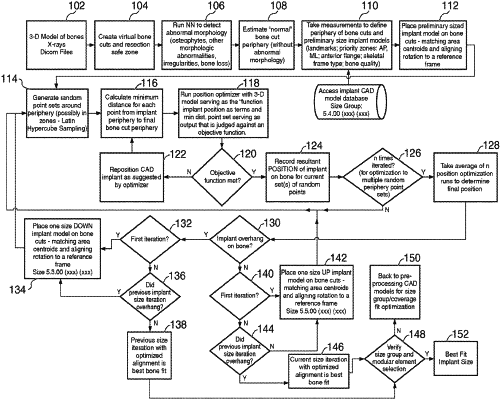| CPC G06F 30/00 (2020.01) [A61B 34/10 (2016.02); A61F 2/02 (2013.01); A61B 2017/568 (2013.01); A61B 2034/104 (2016.02); A61B 2034/105 (2016.02); A61B 2034/108 (2016.02)] | 22 Claims |

|
1. A method for pre-operatively optimizing a fit of an orthopaedic implant relative to an anatomy of an individual, the method comprising:
receiving a three-dimensional anatomic model of the anatomy of the individual;
receiving one or more simulated resection portions of the three-dimensional anatomic model;
identifying, based on the three-dimensional anatomic model and the one or more simulated resection portions, one or more priority zones associated with the three-dimensional anatomic model;
selecting, based on the three-dimensional anatomic model and the one or more simulated resection portions, an orthopaedic implant model corresponding to an orthopaedic implant and having an associated size;
generating, based on the one or more priority zones, a first point set comprising a plurality of points at a periphery of the simulated resection portion;
generating a second point set comprising a plurality of points at a periphery of the selected orthopaedic implant model;
determining whether the position of the periphery of the selected orthopaedic implant model relative to the periphery of the simulated resection portion is optimal based on the first point set and the second point set; and
verifying one or more of the position and the size of the orthopaedic implant.
|